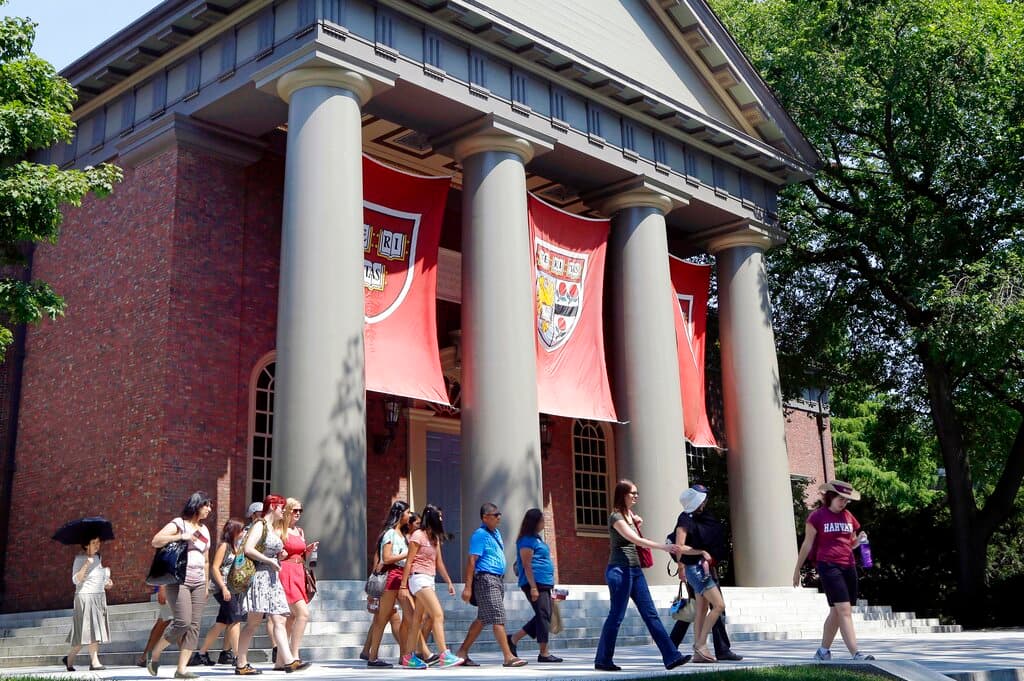Affirmative Action Makes What Might Be Its Last Stand
Five hours of arguments augur an epic battle over whether the Constitution allows for the use of race in college admissions.

The fate of affirmative action in higher education will not be known until the Supreme Court issues its blockbuster decisions in June, but the oral arguments on Halloween could well provide premonitions of the end of race as an admissions tool.
Those arguments were held in two installments. The first concerned the practices of the University of North Carolina, a public institution. The second centered on Harvard University, a private school, albeit one that accepts federal funds. The newest justice, Ketanji Brown Jackson, recused herself from the latter.
This split raises the possibility that the court could decide differently in each case, further complicating the constitutionality of an already vexed practice. While the two cases largely overlap, the question of discrimination against Asian Americans was confined to Harvard.
At issue in both is a line of Supreme Court precedents that begrudgingly allowed for the use of race conscious admissions as part of a holistic process in the service of educational diversity, which the court has agreed is a “compelling” interest and thus allowable as long as it is subjected to “strict scrutiny.”
The high court was so queasy about race as a tool in admissions that in a 2002 case, Grutter v. Bollinger, Justice Sandra Day O’Connor, while allowing for Harvard Law School to continue using a policy that contemplated race, predicted that “25 years from now, the use of racial preferences will no longer be necessary to further the interest.”
Justice Clarence Thomas, while arguing that such preferences are always illegal, took care to note that in “25 years the practices of the Law School will be illegal.” Justice Anthony Kennedy called this affirmative action’s “own self-destruct mechanism.” Both Harvard and UNC are seeking an extension on this deadline, while Students for Fair Admissions suggests that it “forecast its own demise.”
SFFA, the organization challenging the affirmative action scheme in place at Harvard, UNC, and universities throughout the country, argues that not only does the arrangement violate the Equal Protection Clause of the 14th Amendment and the interdiction in Title VI of the United States Code against discrimination based on race, but also takes a toll on the ability of Asian-American students to gain admission.
SFFA points to Asian-American students receiving consistently lower “personal ratings” from Harvard’s admissions bureaucrats to argue that a systematic effort is afoot to suppress the number of that demographic. Race-conscious admissions, they maintain, is not a victimless crime; it is a zero-sum game.
SFFA identified a “cottage industry” of admissions coaches counseling Asian-American students on how to evade this tax on their identity. Harvard’s lawyer, Seth Waxman, retorted that these ratings are merely a “matter of triage” and that Harvard also privileges other groups, like oboe players. Chief Justice Roberts retorted that “we did not fight a civil war over oboe players.”
The arguments took more than five hours, and exposed deep divisions within the court. Justice Thomas exclaimed that “I’ve heard the word diversity quite a few times, and I don’t have a clue what it means,” a sentiment echoed by Justice Samuel Alito, who asked, “What does that mean?” in reference to the term “underrepresented minorities.”
A recurring interest of the judges was an era of Harvard’s past that dates back a century. Justice Neil Gorsuch asked “what do we do about history” in noting that the notion of a “holistic” admissions process was birthed by the 22nd president of Harvard, Abbott Lawrence Lowell, with the aim of keeping a lid on the number of Jewish students at Harvard.
In a 1922 letter, Lowell reasoned that the “antisemitic feeling among students is increasing, and it grows in proportion to the increase in the number of Jews.” Mr. Waxman rejected the idea that Harvard’s current approach might bear any resemblance to the benighted intentions that attended its creation. He called it a “stain.”
Another historical flashpoint was the legacy of the 1954 case known as Brown v. Board of Education. It held that, in the words of Chief Justice Warren, segregation in the realm of education “generates a feeling of inferiority as to their status in the community that may affect their hearts and minds in a way unlikely ever to be undone.” This ended the “separate but equal” regime that had obtained since Plessy v. Ferguson was decided five decades earlier.
SFFA argues in its brief that “any discussion of racial classifications in education must start with Brown,” which it believes ruled that such distinctions were unconstitutional. Harvard and UNC, on the other hand, joined by America’s solicitor general, Elizabeth Prelogar, makes the case that Brown signals high court support for eradicating inequality in education.
In his summation on behalf of SFFA, Cameron Norris launched a broadside against racial classifications, noting that they “increase racial consciousness” and “cause resentment.” In his peroration, he thundered that “Harvard has apologized for how it treated Jews, and it should one day do the same for Asian-Americans.”

